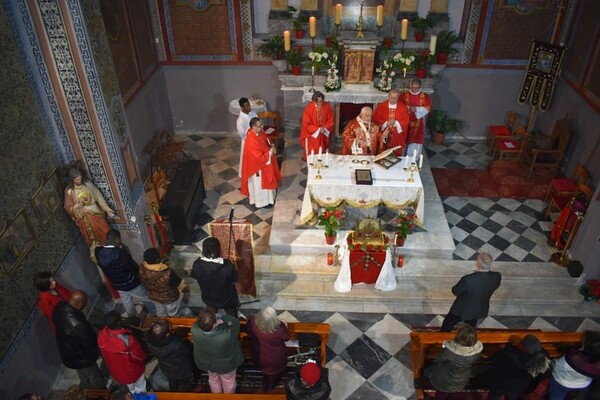As we all know every February and more specifically on the 14th, lovers celebrate, it’s Valentine’s Day.
But how many people know who Valentine’s Day was and why do couples have their honor on that day?

The history of the Valentine’s Day
Saint Valentine, officially known as Saint Valentine of Rome, was a widely recognized Roman Catholic saint of the 3rd century
and it’s being held on 14 February.
Since the Middle Ages, there has been a connection with a tradition of serene love.
Saint Valentine was a priest in Rome and helped Christians who were victims of persecution in the region.
He was martyred and buried in a Christian cemetery in Via Flaminia near Ponte Milvio in northern Rome on
February 14, which has been celebrated as Valentine’s Day since 496.
His remains were kept in the Church and Catacombs of San Valentino, which remained an important place of pilgrimage during the Middle Ages, until the transfer of his remains to the church of Santa Prasente in the pontificate of Nicholas IV.
The flower-covered skull of Saint Valentine is in the basilica of Santa Maria in Cosmedin in Rome,
while other relics were transferred to the Whitfair Street Carmelite Church in Dublin, Ireland.
In the Anglican and Lutheran churches, Saint Valentine is celebrated on February 14.
In addition, in the Eastern Orthodox Church, St. Valentine is celebrated on July 6.
In 1969 the Roman Catholic Church removed it from the General Roman Catholic Calendar,
leaving its liturgical celebration to local calendars, although the use of pre-1970 calendars is allowed.
The Roman Catholic Church recognizes him as a saint, and mentions him in the February 14 entry in the Roman Catholic Martyrology.

The death and burial of Saint Valentine
Valentine was sentenced to death for performing marriages between couples, thus spreading and consolidating the Christian faith.
The body of Saint Valentine was buried in the year 270 in the catacombs of Agia Priscilla.
Since then, the whereabouts of the remains remained unknown, until the tomb was discovered in 1815 and the relic was donated to a priest.
Then the traces of the remains disappear and reappear in 1907 in Mytilene.
Since then, the remains of Agios Valentinos rested in the Catholic church, known to all as “Fragoklisia”, on Ermou Street,
under the altar.
The next “change” took place in 1990, when the relics of Saint Valentine were transferred by the then parish priest of the Catholic Church of Mytilene, the Franciscan monk Father Torquato Morini, since he no longer resided on the island due to the lack of Church staff,
but in Athens and occasionally served Mytilene.
Then, the remains were placed in the chapel of the Order of Capuchins, dedicated to Saints Francis and Clara,
at 7 Guilfordou Street in Victoria Square in Athens.
On February 12, 2009, part of the relics was cut by the Archbishop of the Catholics of Athens, Mr. Nicholas,
a special official document of this act was signed, in the presence of the priestly superior of the Chapel of St. Francis
and St. Clare, Hieromonk of Capuchin Father Gabriel Rigetto and were delivered to the Archbishop of Naxos, Tinos, Andros and Mykonos in his capacity as Apostolic Administrator of the Catholic Diocese of Chios, in order to bring them back to Mytilene.
The restoration of the relics in Mytilene and how the establishment of the feast
In February 2022, the relics were transferred to the Catholic Church of the Transfiguration of the Virgin Mary in the central market of Mytilene.

Because of the confusing information, there is no reference to the Orthodox calendar and
the Orthodox Church never admitted it,
while the Catholic Church also reduced his feast to a mere local holiday.
Over the years, the celebration passed from Italy to Europe and from Britain to America.
In Greece, in 1994, the then press spokesman of the Holy Synod,
Yannis Hadjifotis, proposed that the feast of St. Hyacinth, which is celebrated on July 3, be established as the day of lovers.

